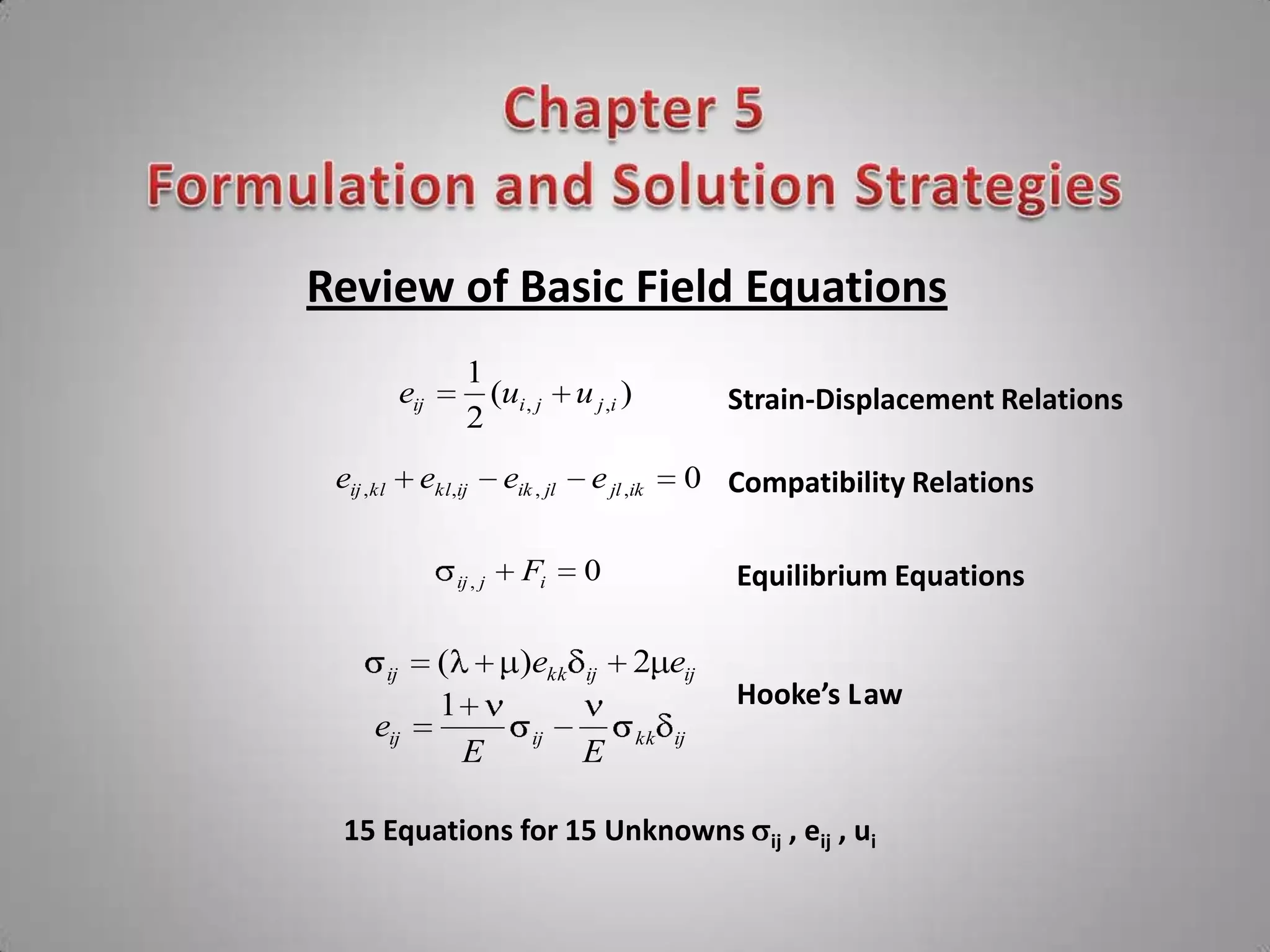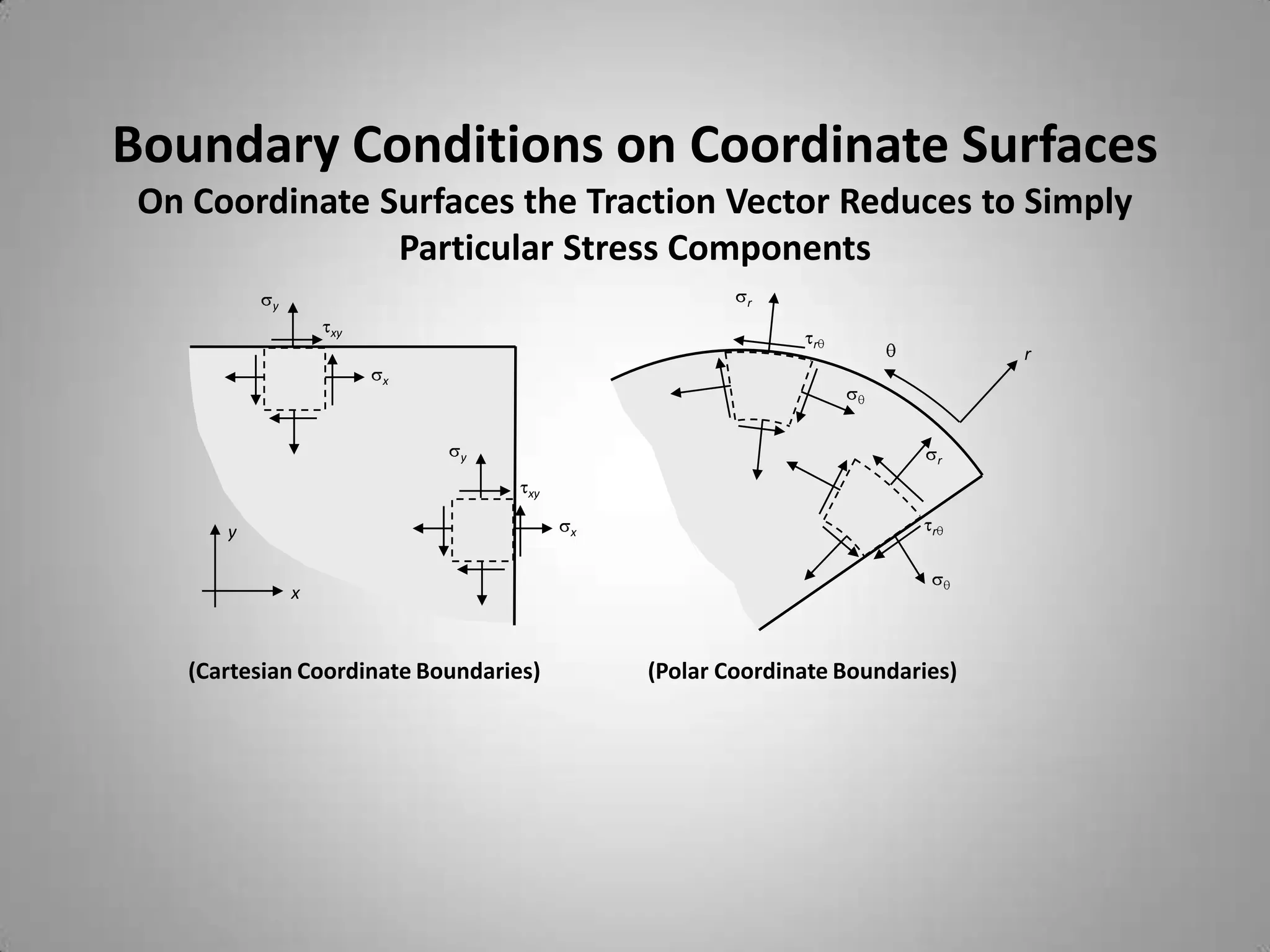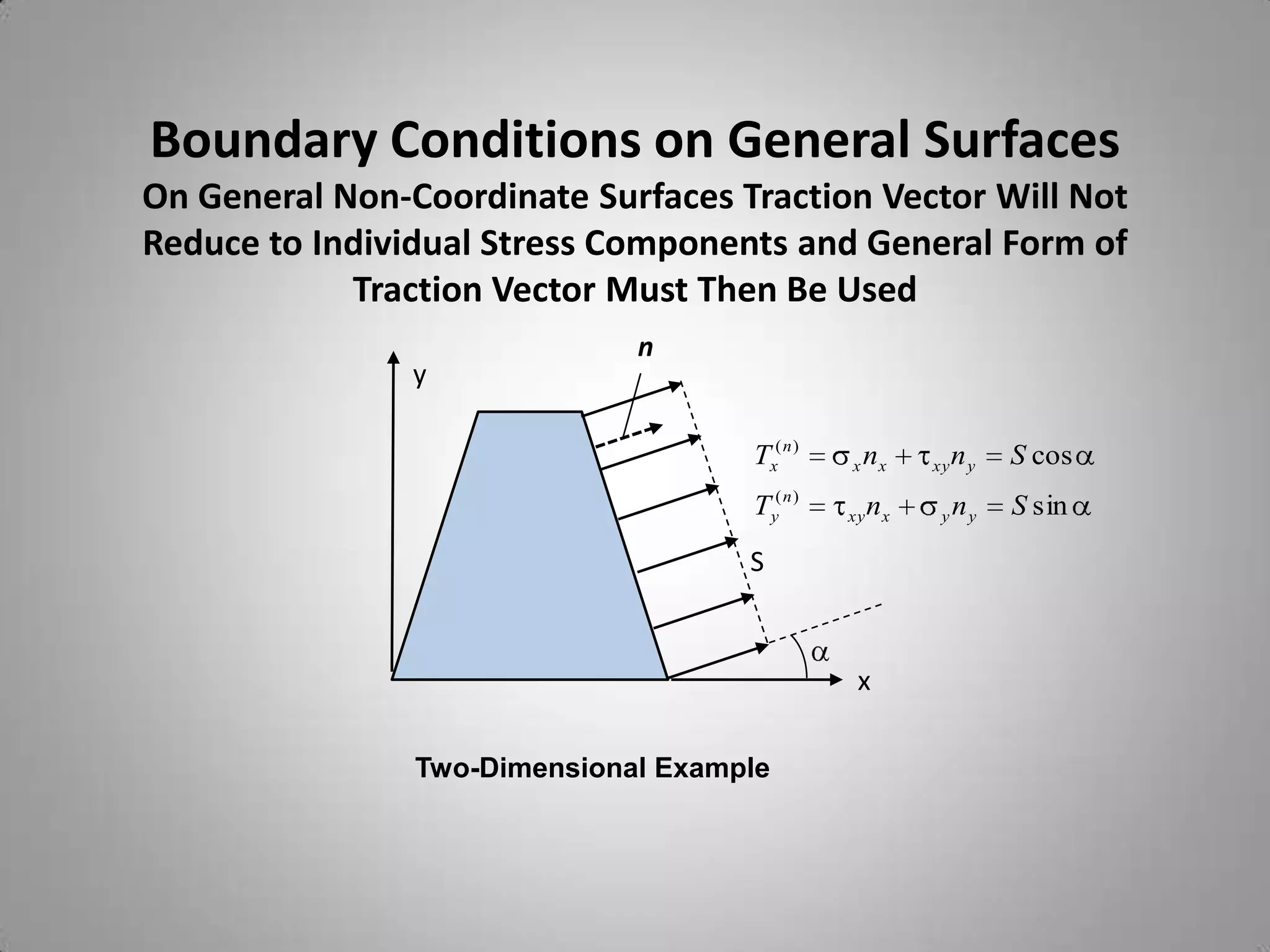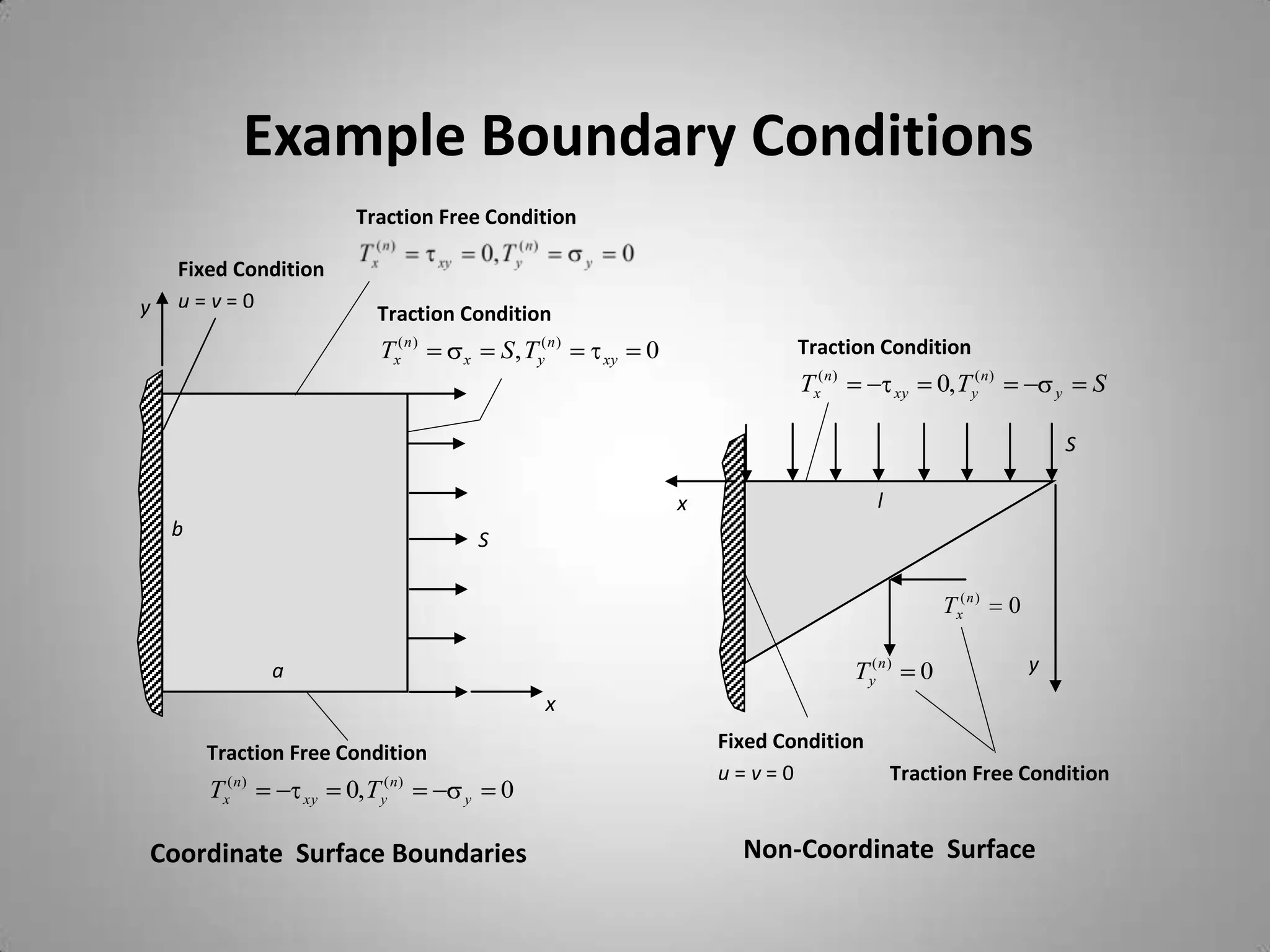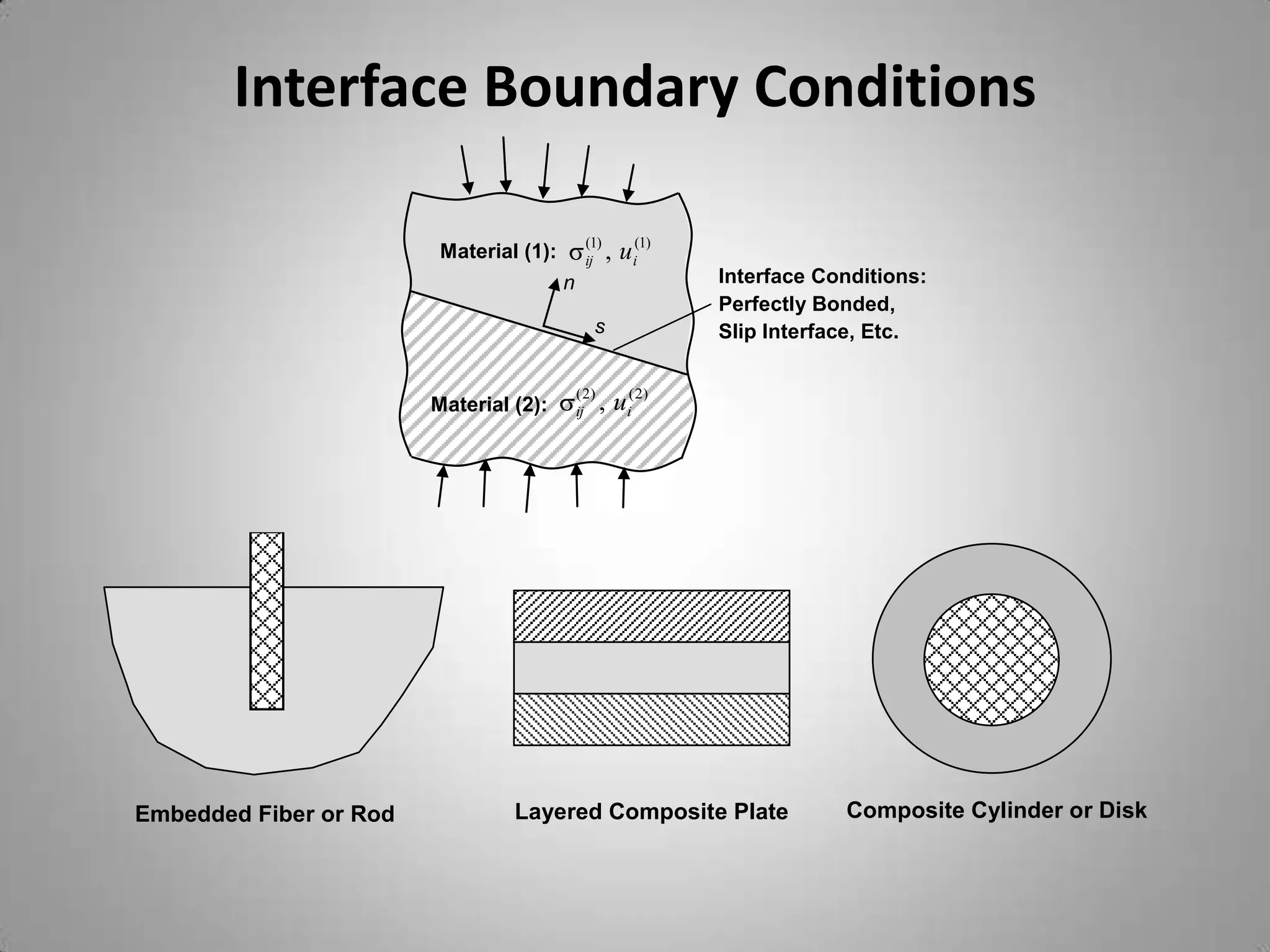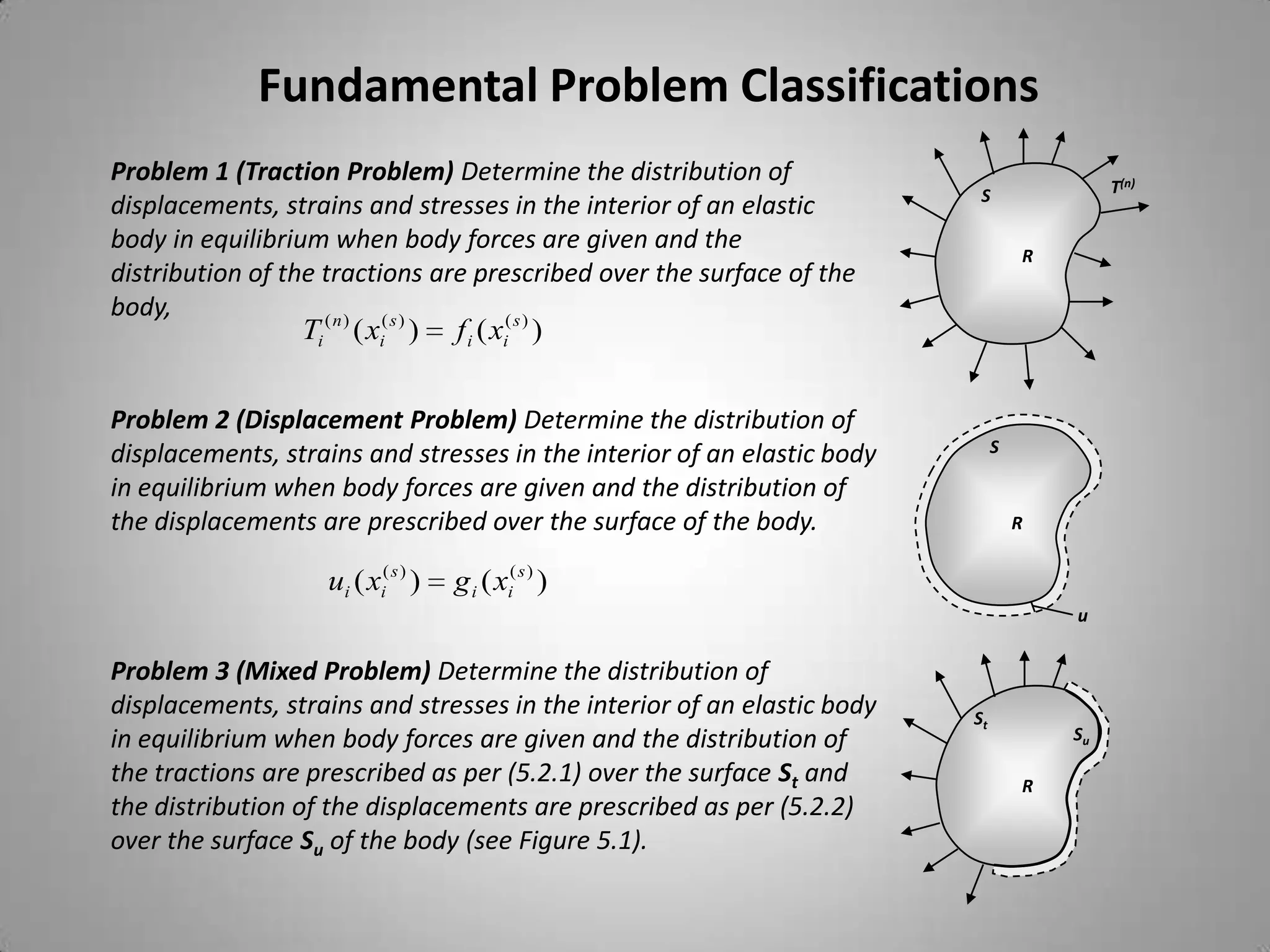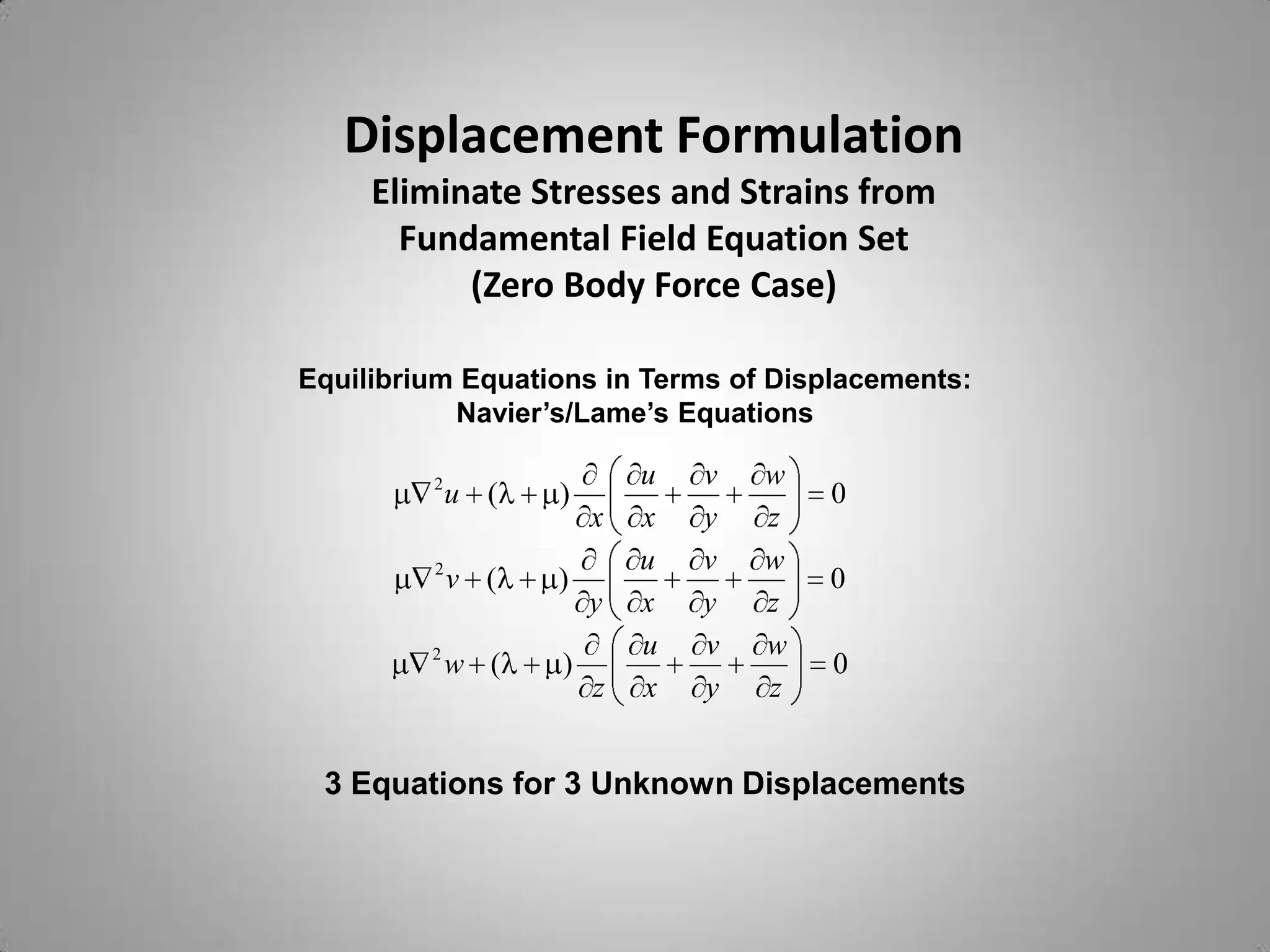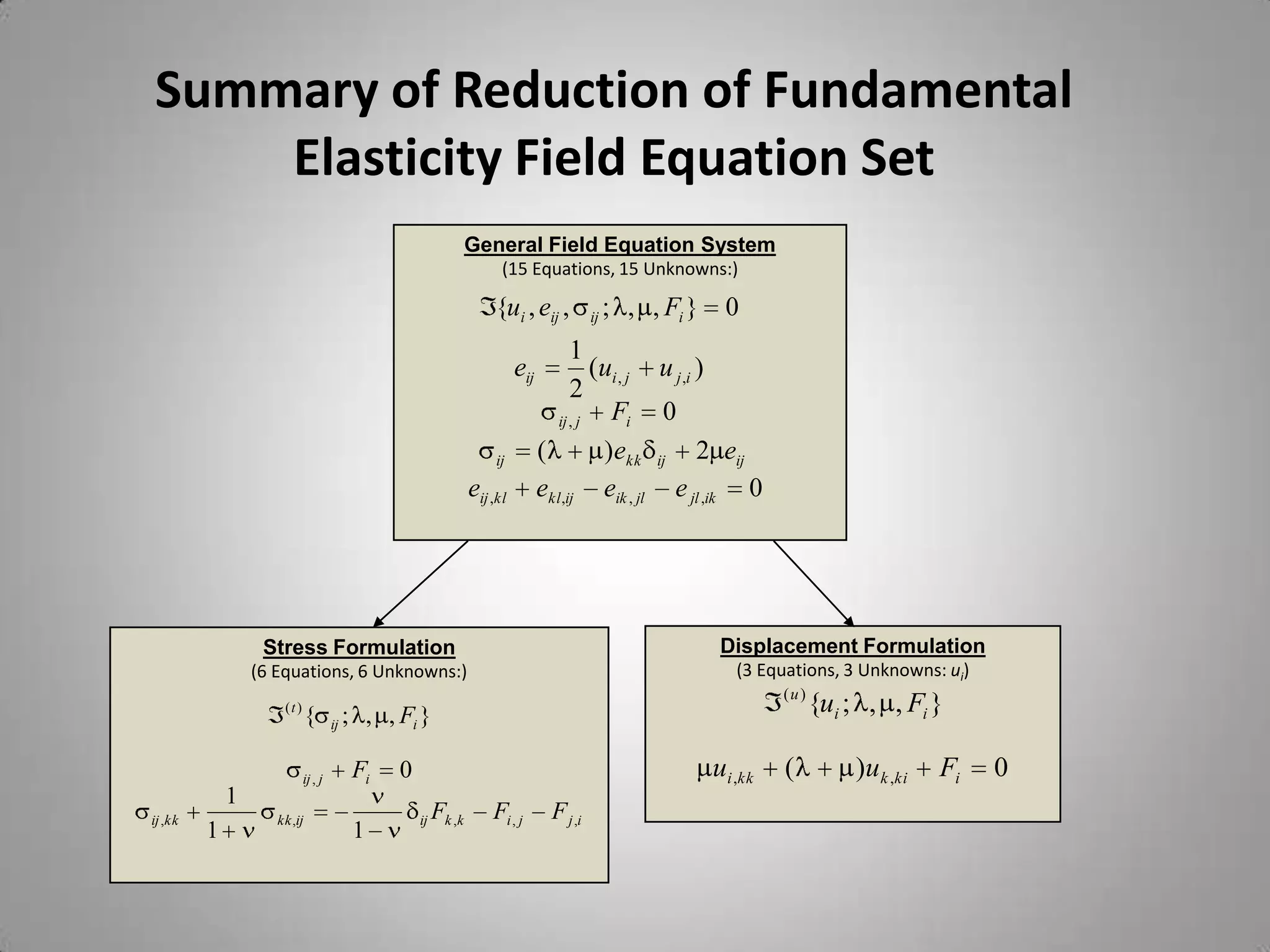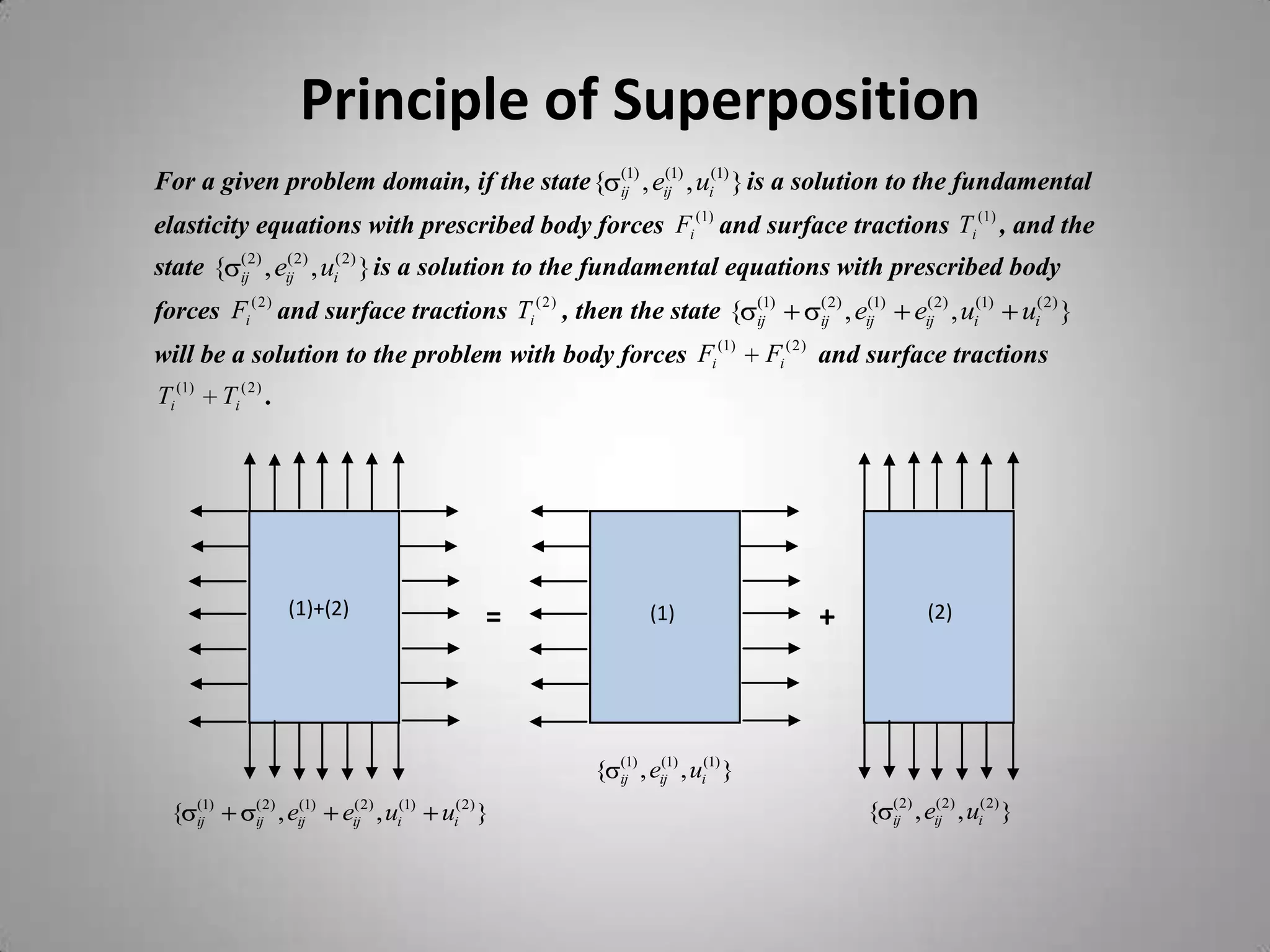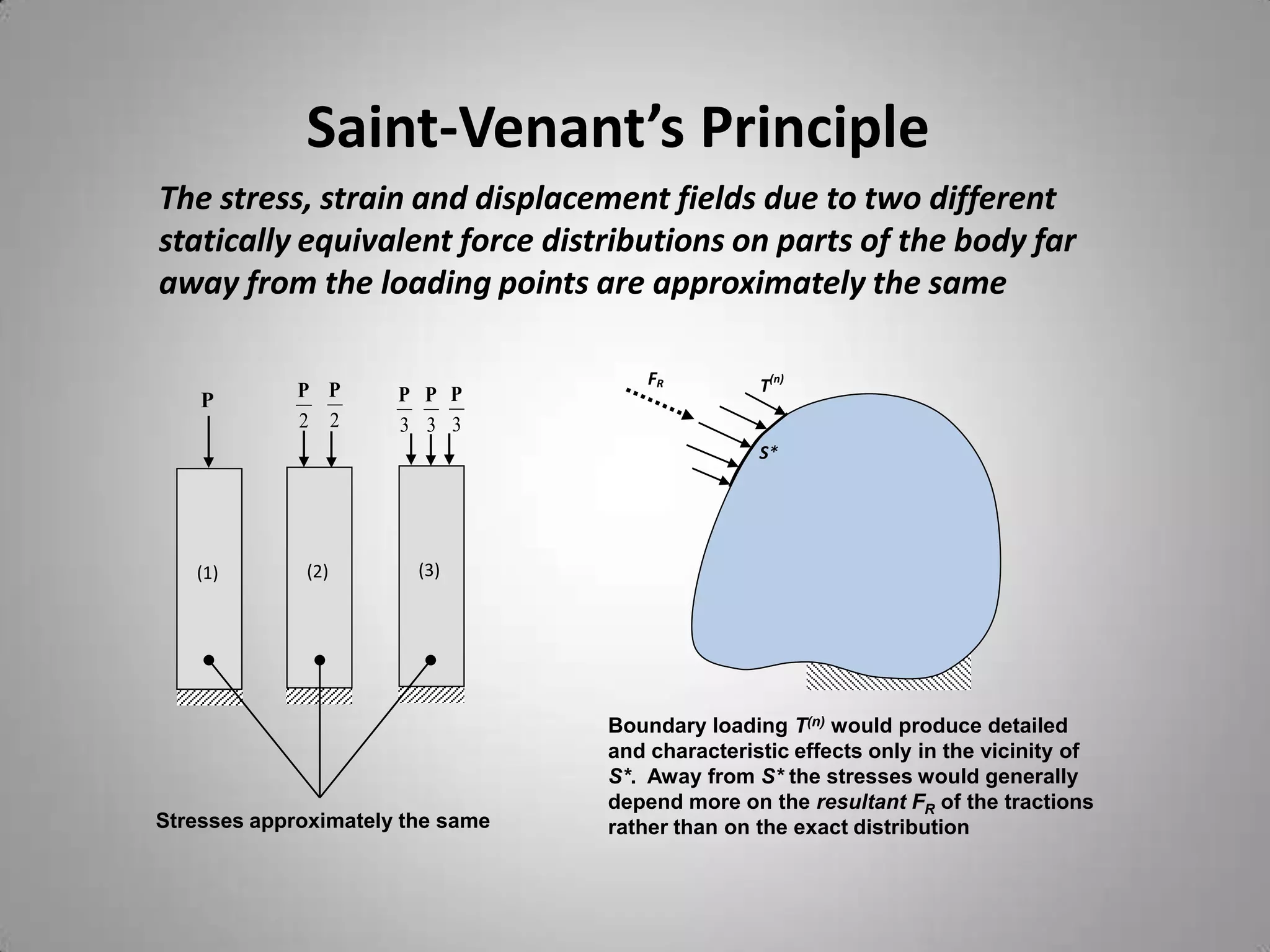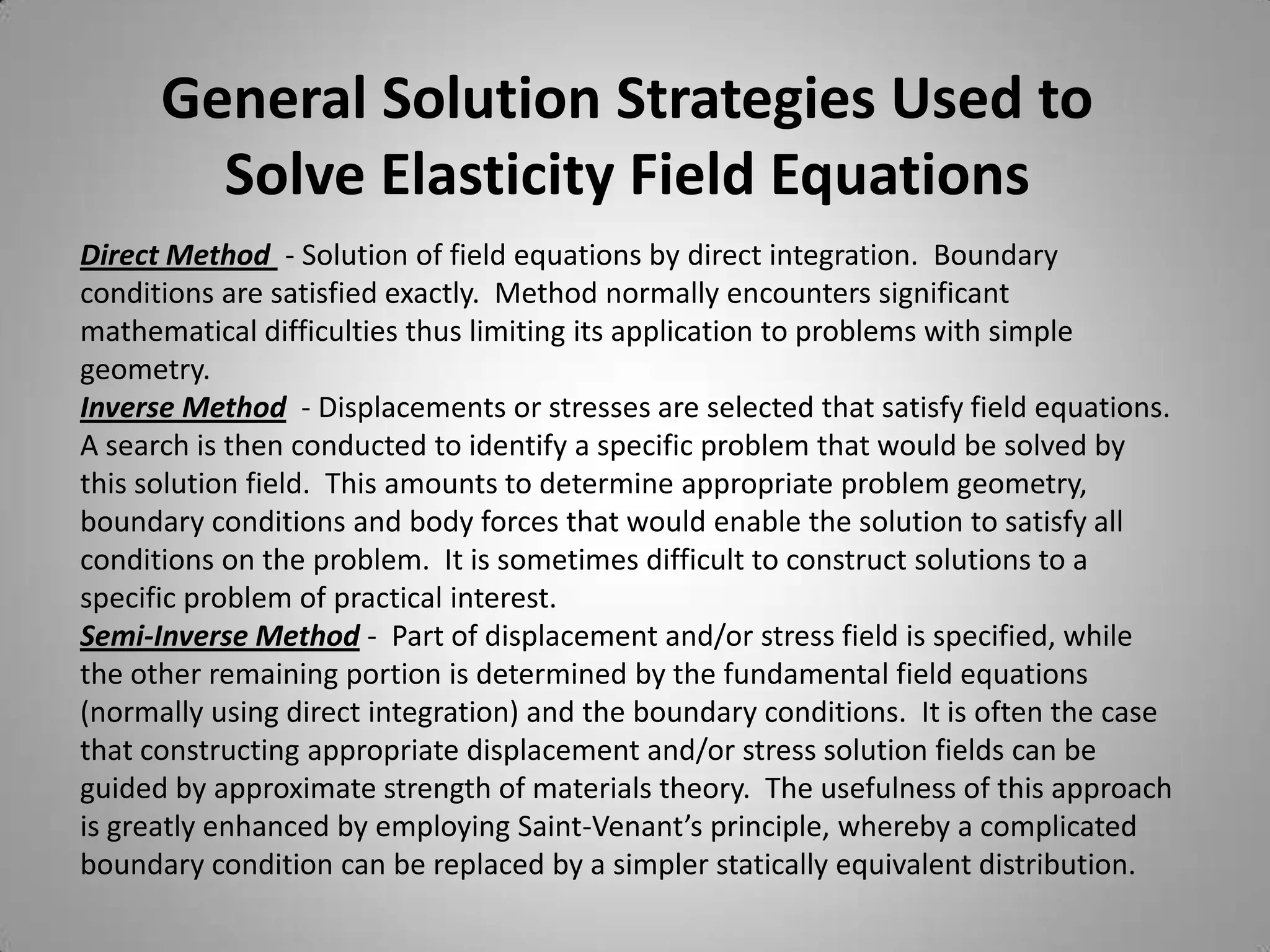The document summarizes key equations in linear elasticity, including:
1. Strain-displacement relations, compatibility relations, and equilibrium equations form the general field equation system with 15 equations and 15 unknowns (displacements, strains, stresses).
2. Hooke's law relates stresses and strains.
3. Boundary conditions include traction, displacement, and mixed conditions and are specified on surfaces.
4. Fundamental problem classifications are the traction problem, displacement problem, and mixed problem.
5. The stress and displacement formulations eliminate unknowns to reduce the field equations to equations involving only stresses or only displacements.
